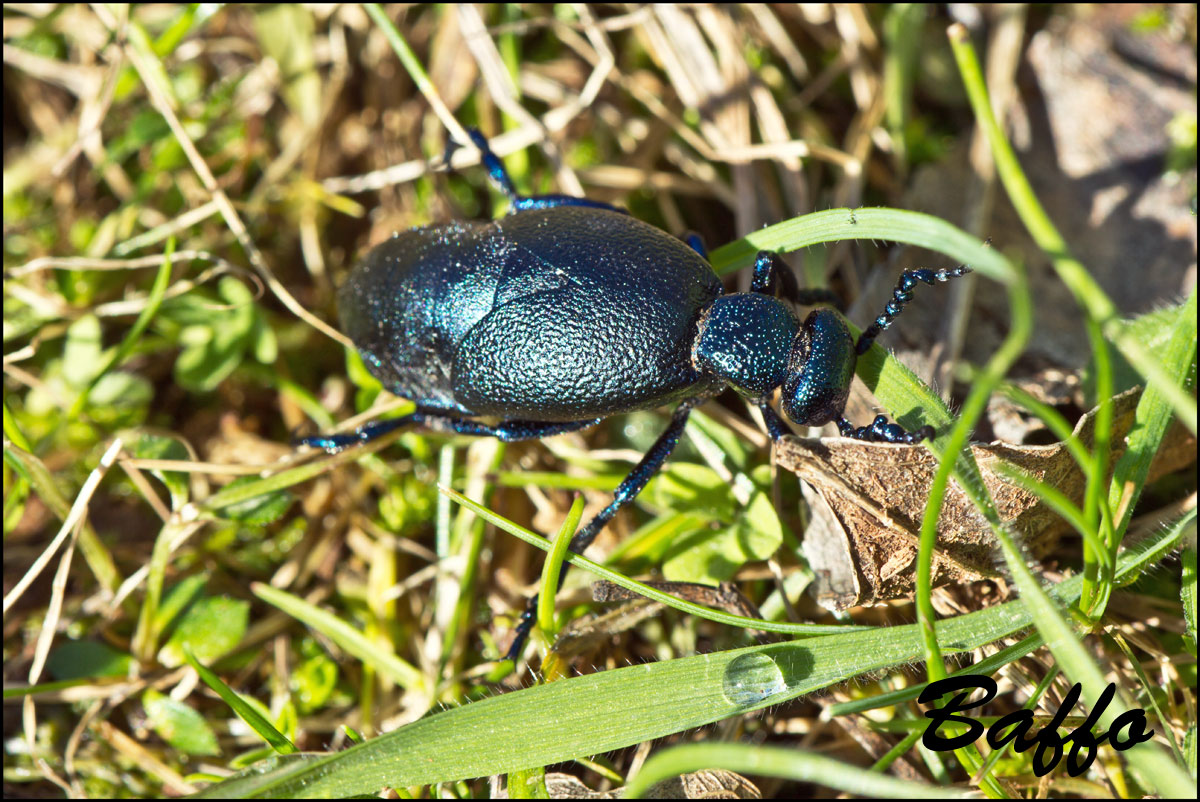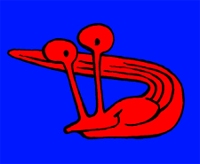|
|
|
|
|
Galleria Tassonomica
di
Natura Mediterraneo
|
 Nota! La determinazione degli insetti necessita quasi sempre di un'indicazione geografica e temporale precisa. Nota! La determinazione degli insetti necessita quasi sempre di un'indicazione geografica e temporale precisa.
Invitiamo quindi gli utenti ad inserire questi dati ogni volta che viene richiesta una determinazione o viene postata una foto di un insetto. I dati forniti dagli utenti ci consentiranno anche di attribuire un valore scientifico alle segnalazioni, contribuendo a migliorare e integrare le attuali conoscenze sulla distribuzione delle specie postate.
|
|
| Autore |
 Discussione Discussione  |
|
|
Claudio Baffo
Utente Senior
   

CittÓ: Trieste
Prov.: Trieste
Regione: Italy

4485 Messaggi
Tutti i Forum |
 Inserito il - 24 febbraio 2014 : 11:04:19 Inserito il - 24 febbraio 2014 : 11:04:19


|
Ho letto che le larve,dette,triungulini,si arrampicano su i fiori in attesa che passi qualche ape bottinatrice,e agrappandosi a esse si fanno trsportare,
nell'alveare,e la penetrano nelle celle,e divorano l'uovo che vi si trova,e la si trasformano in larva,e li si trsformano in curculionoide,e poi segue la veraninfa che volera via dall'alveare,veramente molto interessante,sapete dirmi quanto tempo ci mette a trasformarsi in farfalla e volare via?ciao e grazie.
Baffo
Immagine:

290,88áKB
|
Modificato da - Chalybion in Data 01 marzo 2014 23:40:09
|
|
|
aug
Utente Senior
   

CittÓ: Garbagnate Milanese
Prov.: Milano

2310 Messaggi
Flora e Fauna |
 Inserito il - 24 febbraio 2014 : 18:50:32 Inserito il - 24 febbraio 2014 : 18:50:32


|
| Non Ŕ che si trasforma in "farfalla"...la metamorfosi finale ha come risultato quel coleottero che vedi nella foto, che non Ŕ detto che voli (anzi non credo proprio, altri Meloidi si). Non so esattamente quanto ci metta, dall'uovo a lý, ma certamente diversi mesi e probabilmente qualche cambio di stagione. |
Prediction is very difficult, especially about the future (Niels Bohr)
Augusto |
 |
|
|
Claudio Baffo
Utente Senior
   

CittÓ: Trieste
Prov.: Trieste
Regione: Italy

4485 Messaggi
Tutti i Forum |
 Inserito il - 25 febbraio 2014 : 15:28:45 Inserito il - 25 febbraio 2014 : 15:28:45


|
Grazie aug per la tua risposta,mi sembrava strano che potesse volare via,sul mio libro scrive ( Alla quarta larva che non si nutre,come del
resto la terza,segue finalmente la vera ninfa dalla quale Ŕ destinato a sfarfallare l'adulto che abbandonerÓl'alveare)e questo mi ha tratto in inganno,in ogni caso,grazie delle tue precisazioni,ciao.
Baffo |
|
 |
|
|
Klaas Rei▀mann
Utente Senior
   
CittÓ: Kamp-Lintfort, Nordreno-Vestfalia
Regione: Germany

1614 Messaggi
Tutti i Forum |
 Inserito il - 26 febbraio 2014 : 17:53:19 Inserito il - 26 febbraio 2014 : 17:53:19


|
Ciao,
at first I would like to say, that this is Meloe proscarabaeus in my mind. The basis of the Pronotum is more or less straight, the punctation more rough and dense than in M. violaceus.
Developement: The female of M. violaceus is known for laying a smaller number of eggs 8eggs overwinter), but bigger ones, the once of M. proscarabaeus are smaller and hedge in the same year they are layed. M. violaceus lay somewhat around 10.000 eggs (+), the female of M. proscarabaeus somewhat around 20.- 30.000 eggs.
The larvae (named Triungulus (sgl.) or Triunguli (pl.)) climb up on plants (gras, flowers and similar) and wait on top for insects to come. They grab almost everything they can grab and so many of those Triunguli hang on the wrong insect, like flies, ants, butterflies or even the wrong bees. Only the right species of bee can make the Triungulus a beetle.
In M. proscarabaeus it is surely bees of the genus Andrena (I don't know if all, or if it is specialised) and maybe some others. But no Meloe needs Apis mellifera, the honeybee.
Any questions? Don't hasitate to ask. I will do my very best to answere.
Ciao
Klaas |
|
 |
|
|
Chalybion
Moderatore
    
CittÓ: Bagnacavallo
Prov.: Ravenna
Regione: Emilia Romagna

13548 Messaggi
Tutti i Forum |
 Inserito il - 27 febbraio 2014 : 02:37:40 Inserito il - 27 febbraio 2014 : 02:37:40


|
I agree with the diagnosis of Klaas nell'ipotesi di M.procarabaeus: per tale specie l'intero ciclo dura un anno (primavera-primavera).
Giorgio. |
 |
|
|
Claudio Baffo
Utente Senior
   

CittÓ: Trieste
Prov.: Trieste
Regione: Italy

4485 Messaggi
Tutti i Forum |
 Inserito il - 27 febbraio 2014 : 08:15:09 Inserito il - 27 febbraio 2014 : 08:15:09


|
| Messaggio originario di Klaas Rei▀mann:
Ciao,
at first I would like to say, that this is Meloe proscarabaeus in my mind. The basis of the Pronotum is more or less straight, the punctation more rough and dense than in M. violaceus.
Developement: The female of M. violaceus is known for laying a smaller number of eggs 8eggs overwinter), but bigger ones, the once of M. proscarabaeus are smaller and hedge in the same year they are layed. M. violaceus lay somewhat around 10.000 eggs (+), the female of M. proscarabaeus somewhat around 20.- 30.000 eggs.
The larvae (named Triungulus (sgl.) or Triunguli (pl.)) climb up on plants (gras, flowers and similar) and wait on top for insects to come. They grab almost everything they can grab and so many of those Triunguli hang on the wrong insect, like flies, ants, butterflies or even the wrong bees. Only the right species of bee can make the Triungulus a beetle.
In M. proscarabaeus it is surely bees of the genus Andrena (I don't know if all, or if it is specialised) and maybe some others. But no Meloe needs Apis mellifera, the honeybee.
Any questions? Don't hasitate to ask. I will do my very best to answere.
Ciao
Klaas
|
Molto interessante la tua specificazione,non credevo potessero fare tante uova,e aggrapparsi a tutto quello che vola sopra di loro,veramente molto interessante,mi sembra di aver capito che questo Ŕ un maschio,posso chiederti come si fa riconoscerlo?grazie per la tua specificazione,ciao.
Baffo |
|
 |
|
|
Claudio Baffo
Utente Senior
   

CittÓ: Trieste
Prov.: Trieste
Regione: Italy

4485 Messaggi
Tutti i Forum |
 Inserito il - 27 febbraio 2014 : 08:17:40 Inserito il - 27 febbraio 2014 : 08:17:40


|
| Messaggio originario di Chalybion:
I agree with the diagnosis of Klaas nell'ipotesi di M.procarabaeus: per tale specie l'intero ciclo dura un anno (primavera-primavera).
Giorgio.
|
Grazie anche a te Giorgio,non credevo che potessero rimanere tanto tempo in quella fase,ciao e grazie.
Baffo |
|
 |
|
|
Chalybion
Moderatore
    
CittÓ: Bagnacavallo
Prov.: Ravenna
Regione: Emilia Romagna

13548 Messaggi
Tutti i Forum |
 Inserito il - 01 marzo 2014 : 23:28:58 Inserito il - 01 marzo 2014 : 23:28:58


|
I maschi di alcune di tali specie hanno antenne "ginocchiate" (si vedono in foto): le femmine le hanno diritte.
 |
 |
|
|
Klaas Rei▀mann
Utente Senior
   
CittÓ: Kamp-Lintfort, Nordreno-Vestfalia
Regione: Germany

1614 Messaggi
Tutti i Forum |
 Inserito il - 02 marzo 2014 : 00:50:40 Inserito il - 02 marzo 2014 : 00:50:40


|
Meloe proscarabaeus and M. violaceus are of the same subgenus (subgenus Proscarabaeus). The male beetles in this subgenus do have a break in the antennae, because of the 6th and 7th limb of the antennae, which are more or less flatenned and nit straigth, so they built a bow. The following four limbs are much smaller, than the first five limbs.
The female of this genus can be recognized very easily, because their first seven limbs are clearly bigger, than the following four and the top. There is just Meloe autumnalis, who's female have got this character and whos male have got this character very strongly. Their 6th and 7th limb is flattened and rounded and in this seem to be much bigger.
Ciao
Klaas |
|
 |
|
|
Claudio Baffo
Utente Senior
   

CittÓ: Trieste
Prov.: Trieste
Regione: Italy

4485 Messaggi
Tutti i Forum |
 Inserito il - 02 marzo 2014 : 08:20:10 Inserito il - 02 marzo 2014 : 08:20:10


|
| Messaggio originario di Chalybion:
I maschi di alcune di tali specie hanno antenne "ginocchiate" (si vedono in foto): le femmine le hanno diritte.

|
Grazie nuovamente Giorgio,ciao.
Baffo |
|
 |
|
|
Claudio Baffo
Utente Senior
   

CittÓ: Trieste
Prov.: Trieste
Regione: Italy

4485 Messaggi
Tutti i Forum |
 Inserito il - 02 marzo 2014 : 08:23:37 Inserito il - 02 marzo 2014 : 08:23:37


|
| Messaggio originario di Klaas Rei▀mann:
Meloe proscarabaeus and M. violaceus are of the same subgenus (subgenus Proscarabaeus). The male beetles in this subgenus do have a break in the antennae, because of the 6th and 7th limb of the antennae, which are more or less flatenned and nit straigth, so they built a bow. The following four limbs are much smaller, than the first five limbs.
The female of this genus can be recognized very easily, because their first seven limbs are clearly bigger, than the following four and the top. There is just Meloe autumnalis, who's female have got this character and whos male have got this character very strongly. Their 6th and 7th limb is flattened and rounded and in this seem to be much bigger.
Ciao
Klaas
|
Grazie anche a te Klaas,spiegazione molto precisa,ciao e grazie.
Baffo |
|
 |
|
|
Cmb
Moderatore
    

CittÓ: Buers
Prov.: Estero
Regione: Austria

12844 Messaggi
Flora e Fauna |
 Inserito il - 09 marzo 2014 : 19:58:00 Inserito il - 09 marzo 2014 : 19:58:00


|
vedi anche Link
e la letteratura di Klausnitzer (2005) Link
|
"Good people don't go into government" (D. Trump)

Link - nothing is more dangerous than the truth - solo chi conosce il passato, pu˛ capire il presente! - nothing is more dangerous than the truth - solo chi conosce il passato, pu˛ capire il presente!
|
 |
|
| |
 Discussione Discussione  |
|
|
|
 Natura Mediterraneo Natura Mediterraneo |
© 2003-2024 Natura Mediterraneo |
 |
|
Leps.it | Herp.it | Lynkos.net
|

 Forum
|
Registrati
|
Msg attivi
|
Msg Recenti
|
Msg Pvt
|
Utenti
|
Galleria |
Map |
Forum
|
Registrati
|
Msg attivi
|
Msg Recenti
|
Msg Pvt
|
Utenti
|
Galleria |
Map |